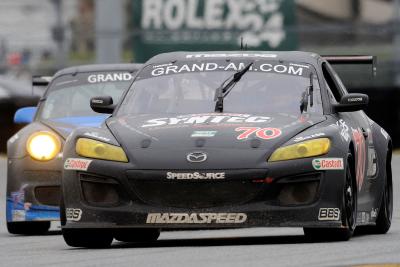
Rotary engines feature a radically different construction than piston engines. In lieu of reciprocating rods and pistons, rotary engines utilize triangular rotors that complete the four phases of the combustion process by rotating at an offset angle within the combustion chamber. To work efficiently, rotary engines require the use of both leading and trailing spark plugs in each chamber.
Unlike piston engines, which feature a cylindrical chamber for each piston, rotary engines utilize a long, elliptical combustion chamber. The elliptical shape is necessary to allow the triangular rotor to rotate about the output shaft at an offset angle. Though rotary engines feature far fewer moving parts than piston engines, the elliptical shape of the combustion chamber complicates the ignition process. With a piston engine, a single spark can provide a uniform flame to drive the piston downward and power the engine. With a rotary engine, however, two spark plugs are needed, because otherwise the combustion flame would spread too slowly, providing uneven and inadequate force to drive the rotor.
The leading spark plug is located lower in the combustion chamber than the trailing plug. The leading plug is the first to fire, which ignites most of the air-fuel mixture and provides the majority of power. However, if a rotary engine only featured leading spark plugs, incomplete combustion would likely occur, because the rotor would move into the exhaust phase before the combustion flame could reach the air-fuel mixture in the upper portion of the chamber.
Located higher up in the combustion chamber, the trailing spark plugs typically fire 10 to 15 degrees later in the combustion process than the leading plugs. This completes the combustion and provides a more uniform flame to power the rotation of the rotor. An easy way to remember the position of the separate spark plugs is "T" for the top, trailing plugs, and "L" for the lower, leading plugs.
The four-stroke process begins with the tip of the rotor passing by the intake port. As rotation continues, the offset position of the rotor increases the room in the upper portion of the combustion chamber, drawing in the air-fuel mixture. The rotor continues its rotation, compressing the air-fuel mixture against the side of the chamber on which the spark plugs are located. At top dead center, the air-fuel mixture is maximally compressed. The leading spark plug then fires, initiating the combustion process. Power is thus added to the rotor's rotation, and the trailing spark plug completes the air-fuel combustion as the tip of the rotor continues downward. The rotor then forces the combustion gases farther downward until the tip of the rotor passes the exhaust port, at which point the gases are forced out of the combustion chamber.
Because the leading plugs are required to ignite the majority of the air-fuel mixture, the plug gaps and other specifications of the leading and trailing plugs are different, and therefore they are not interchangeable. Additionally, the leading plugs of the separate combustion chambers are connected to the same ignition channel, allowing for the use of a single coil. This means that the leading plugs always fire simultaneously, creating what is called a "wasted spark" in one of the combustion chambers where combustion has already been completed. The trailing plugs of each chamber require a dedicated ignition channel so that they can fire independently. This is necessary due to the higher position of the trailing plugs: If they fired simultaneously, the plug firing the wasted spark would ignite the incoming air-fuel mixture prematurely, upsetting the combustion process.